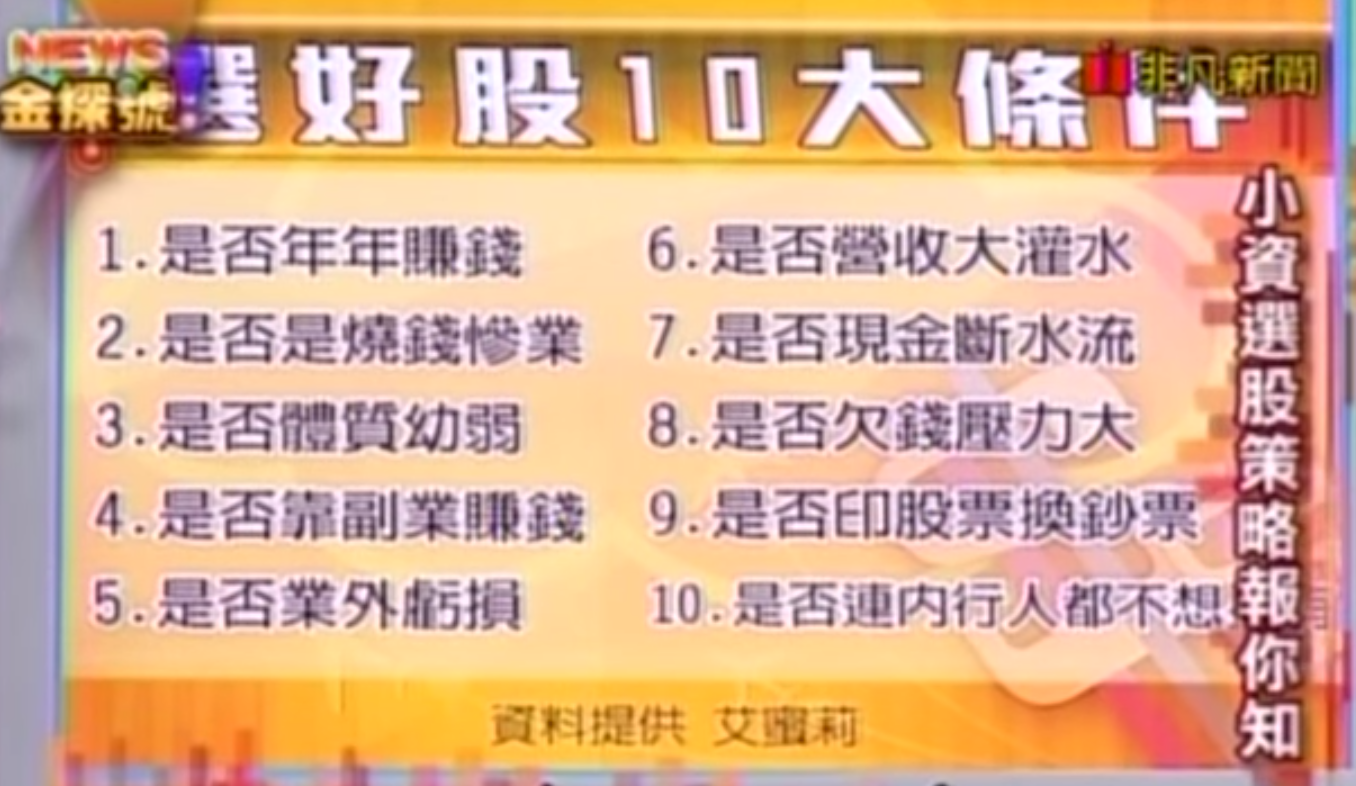She reveal how she pick good stock and time the market in the interview. And, below is some of the points shared on the interview.
How to choose a Good Companies
- Buy companies with strong histories of profitability
- Avoid commodities business that need high capex with negative growth of the gross profit margin. (In another words, look for franchises which are able to dig deep economic moats around their castles)
- Avoid company with small cap; look for big cap with long listing history.
- Check where is the earning come from? Operating profit or investing profit? We should focus on company that able to generate profit from its core business.
- Check if company invest in loos making initiative?
- To exclude company with low quality earning. Check Revenue Growth vs Trade Receivable.
- To check if a firm able to generate Operating Cash Flow to support it's own cash usage.
- Avoid high debt company?
- Prevent company that alway ask cash from owner.
- Avoid company with insider selling.
How to determine if a stock price is expensive or cheap?
- Based on historical dividend yield
- Based on historical share price
- P/E
- P/B
- ROE
- Red - Expensive
- Yellow - Moderate
- Green - Cheap
From the interview sections, she mentioned that she will monitor around 80 stocks and start to buy when the price is cheap, and start to sell when price is expensive. In one time, she will hold 3-5 stocks to achieve diversifications.
- DY is a good indicator - we can buy a good comapnies when DY is high and sold it when DY is low. This metric can be used at a company with a dividend payout policy.
- I don't get the idea why should use this? A share price alone not able to reflect the value. What can we know if the share price hit a 52W high or 52W low?
- I prefer to use the magic formula to replace the P/E.
- We need to bear in mind that not all asset is same quality. And, some company is asset light and market will value it based on its earnign power instead of the book value. Compare with P/B, I think graham net net might be a better candidate for us to hunt for cheap stock with good asset quality.
- There is some issues and pitfall on ROE, do perform DuPont analysis on the ROE, or alternately I prefer to use ROIC
References:-


That's why a lot of value investors never believe in analysts' advice...
ReplyDeleteThe last few minutes were awful... And yes, there's only ONE WB in this world, but he is not the one and only successful value investor or contrarian...